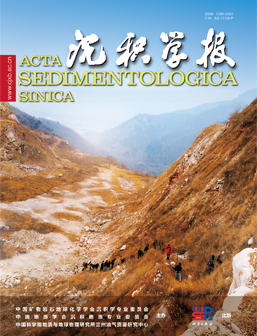Paleo-wildfire records and carbon cycle effects in peat (coal-forming) bogs
doi: 10.14027/j.issn.1000-0550.2024.133
- Received Date: 2024-08-19
- Available Online: 2025-03-04
-
Key words:
- Paleo-wildfire /
- charcoal /
- peat bogs /
- deep-time carbon cycle /
- Cretaceous
Abstract: [Significance] Peat bogs play an important role in the global carbon cycle as a depositional carrier of paleo-wildfire events and paleoclimate information. By systematically sorting out wildfires types in peat bogs and clarifying the academic terminology related to wildfire products such as charcoal, the carbon source and sink effects of wildfires in peat bogs will be discussed in this study, which will be useful for the study of the carbon cycle in deep time. [Progress] Wildfire product charcoal, approximately equivalent to the inertinite in coal, is a relatively stable carbon store of plant incomplete combustion residues, which can provide a record of wildfire activities in the geological history of millennia to billions of years. Changes in charcoal material composition (e.g., polysaccharides and lignin) and microstructure (e.g., cell wall homogenization) can reflect the temperature range of paleo-wildfires. Wildfire types can be recovered and atmospheric oxygen content can be constrained using inertinite reflectance and inertinite content. The impacts of wildfires on the global carbon cycle include both short-term carbon source and long-term carbon sink effects. Wildfires lead to direct large carbon emissions and carbon release from deep peat burning. However, wildfire-driven persistent changes in soil microorganisms, aggregates, and organic matter can directly offset some of the carbon losses, and charcoal provides a stable carbon store. [Conclusions and Prospects] Based on the carbon cycle model of peatland under normal burial conditions, the influence factors of wildfire, soil aggregates, fungi and bacteria were introduced to propose a post-fire peatland carbon cycle model. Using the inertinite wildfire genesis and greenhouse gas emission models, and taking the carbon emission and carbon storage of wildfires in early Cretaceous peat (coal-forming) bogs in Northeast China as an example, the results show that the long-term (million-year time scale) carbon sinks of forest vegetation growth and peatland are fully capable of neutralizing the short-term (year time scale) carbon source effect brought by wildfires. In the future, when evaluating the deep-time carbon cycle response to wildfires, it is necessary to take into account the length of the time period and wildfires intensity, and improve the understanding of climate change and environmental evolution caused by wildfire in order to promote the in-depth integration of deep-time and present-day climate change and carbon cycle research.
| Citation: | Paleo-wildfire records and carbon cycle effects in peat (coal-forming) bogs[J]. Acta Sedimentologica Sinica. doi: 10.14027/j.issn.1000-0550.2024.133 |






 DownLoad:
DownLoad: